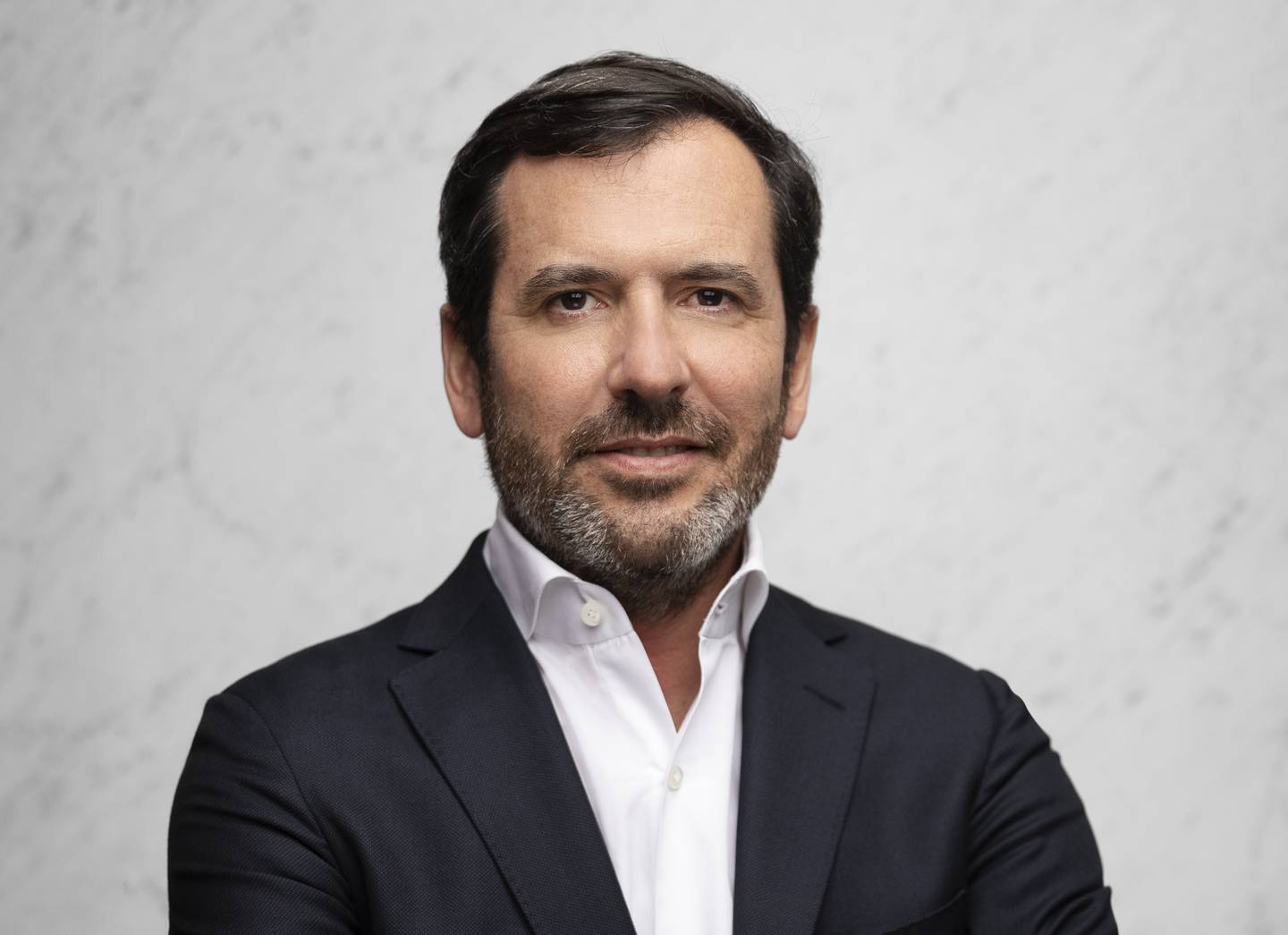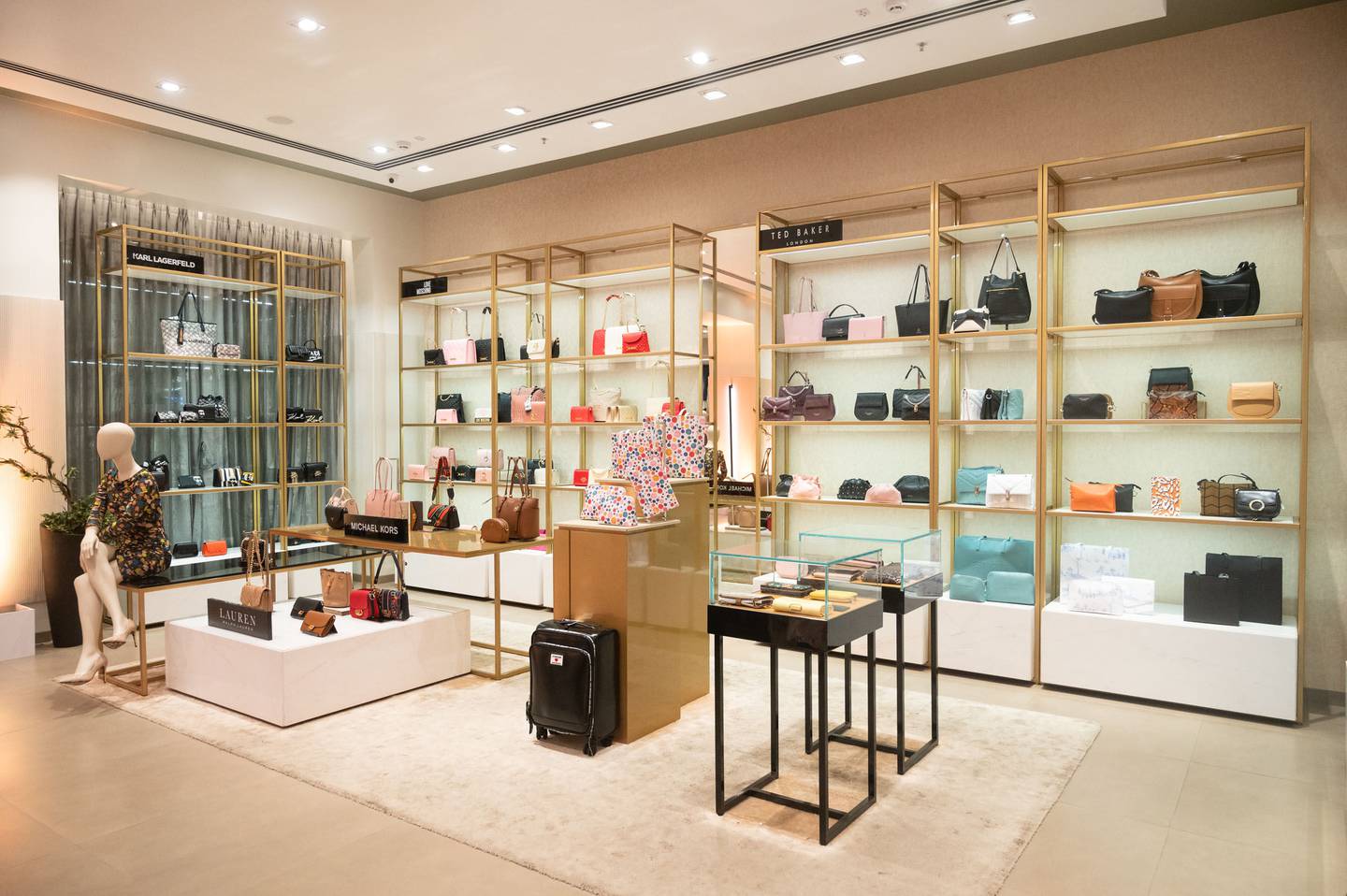
Galeries Lafayette will make history as the first European department store of its kind to enter India next year with a branch in Mumbai. Showcasing more than 200 international and local brands across fashion, lifestyle and food, the new venture, in partnership with local group Aditya Birla Fashion and Retail Limited (ABFRL), aims to fill some of the white space in the luxury department store sector.
Philippe Pedone, international senior vice president at Galeries Lafayette, believes the time is right to enter India as its economy continues to register comparatively robust growth, amid slowdown fears in the US and a recession in the eurozone. “It’s one of the main retail markets with double-digit growth… [and] young Indian customers are very well connected with the [global] fashion market,” he said.
The French department store operator’s foray into India’s multi-brand luxury space has prompted industry insiders to ponder whether it will galvanise other European or American department stores to follow suit. Harvey Nichols, Saks Fifth Avenue, Bloomingdales and others have already opened branches in emerging markets across Asia, the Middle East and other regions.
Devangshu Dutta, founder and CEO of Gurugram-based retail consulting firm Third Eyesight, believes that several players are interested in the Indian market, but any move hinges on multiple factors, including an indication of adequate demand for their brand and business model, availability of high-quality retail environments, and possibly a reduction in import duties overall or through free trade agreements which can help improve business viability.
“India also needs to move significantly higher on the income scale, with a larger number of high-income consumers, for there to be any significant demand support for luxury department stores,” said Dutta.
The number of high-net-worth individuals (US dollar millionaires) in India is expected to increase 108 percent between 2022 and 2027 to 1.66 million people, according to a global wealth report by Knight Frank. Many still prefer to shop overseas but brands are beginning to work harder to persuade them to buy more at home. Whether the overall domestic spend will constitute a sufficient base for more than one luxury department store chain is up for debate.
A degree of caution is shared by many retail industry leaders but not everyone is as bearish as Dutta.
“If [Galeries Lafayette] proves that they were right in doing so, that will create some interest from other department stores,” said Selvane Mohandas du Ménil, managing director of the Paris-based International Association of Department Stores (IADS).
Others point to the rapid expansion of major Indian multi-brand chains as evidence of growing consumer interest in the format in broader terms.
Department store chains in India, such as Westside, tend to operate in the mass or mid-market. While there aren’t any luxury players on the scale of Galeries Lafayette or its counterparts in Europe and the US, there are homegrown multi-brand boutique chains.
ABFRL’s The Collective, which sells global brands such as Ferragamo and Emporio Armani, now has around a dozen locations in metros like the National Capital Region cities of New Delhi, Gurgaon and Noida as well as Mumbai, Chennai, Bengaluru, Kolkata, Hyderabad, Ahmedabad, Pune, Ludhiana, Lucknow and Chandigarh. ABFRL’s arch-rival Reliance Retail owns The White Crow, which sells Jimmy Choo and Michael Kors among others, and has a footprint covering some of the same cities but also Surat, Jaipur, Raipur, Dehradun, Indore and Ranchi.
On top of that, there are a few long-running independent stores in Mumbai or Delhi like Le Mill, and premium e-commerce players like Tata Cliq Luxury, Darveys and Reliance-owned Ajio Luxe using the multi-brand format. Customers can also find a variety of upmarket Indian designer brands at stores like Ogaan, Ensemble, Pernia’s Pop-Up shop and Aza Fashions.
Galeries Lafayette and any future department stores that enter India will be competing for the same customer as some of these retailers. If they have enough unique selling points to offer, however then they could be complementary — albeit sometimes overlapping — players.
Gaining First-Mover Advantage
India is touted as a “rising star” for the global luxury goods industry, with spending by Indian consumers expected to hit €25 to €30 billion ($26.8 to 32.2 billion) by 2030, up from less than €8 billion, last year, according to Bain & Company. This year is seen as a watershed moment of sorts for the local luxury sector.
“The partnership with Galeries Lafayette is a ringing endorsement of India’s significance as a global luxury market and a future engine of growth for luxury brands,” said ABFRL managing director Ashish Dikshit in November when the project was first announced. “This is a coming-of-age moment for Indian luxury.”
In one sense, ABFRL and Galeries Lafayette are simply responding to this potential in the same way that luxury brands have as they rolled out mono-brand stores across the country.
“Over the next ten years, the country will move from being a $3 trillion dollar economy to a $5 trillion economy, potentially a $10 trillion economy down the line. There’s obviously going to be an upward movement of the upper middle and aspirational class [which means a further]… deepening of the [luxury] consumer pool,” said Sathyajit Radhakrishnan, president, international business, ABFRL.

One focus for the company will likely be to bring French and international designers that don’t yet have the resources to enter the market on their own. Another will be as a supplementary channel for those already present. Most major global brands have at least one store in both Mumbai and Delhi but some are underpenetrated in terms of store size, number or don’t have an optimal location.
“In a multi brand environment… even brands who already have mono-brand stores [in India], might [be able to] express themselves a bit more,” said du Ménil.
That is not the only way department stores could serve brands in India.
Arvind Singhal, managing director at Gurugram-based retail consultancy firm Technopak Advisors, believes the Galeries Lafayette space will be attractive to newly affluent and aspirational consumers who could feel more at ease shopping in that environment compared to some other retail spaces.
“In terms of comfort, convenience and security in their home country, we will see a lot of… first-time rich [and] first-time potential buyers of luxury’s [entry-level items]… [who] will be exposed to a large number of luxury brands… That will boost the overall awareness around luxury in India in the future.”
As Galeries Lafayette’s local partner, ABFRL could also pitch to become the Indian partner for more overseas brands who want to open mono-brands or distribute across other channels.
“What we can bring as an added value to this market is our French heritage and know-how, and experience in retail… We need to use these but with an adaptation locally [so] we will [add] a local twist in order to be well received by Indian consumers and fit their needs,” said Pedone.
Galeries Lafayette’s new store in Mumbai is designed to be 90,000 square feet combining two historical buildings in the Fort area while its Delhi store will be comparatively smaller at 65,000 feet, at the existing luxury Emporio Mall.
Pedone says both stores will have a local curation that is a complementary play for big Indian designers, most of whom have large flagship stores in both cities. He added that Galeries Lafayette will propose complementary accessories for Indian designer clothing to capture part of the country’s $50 billion wedding market.
Local brands will be crucial for any other department store with India plans. Traditional clothing, such as saris, salwar kameez and lehengas, are still the default clothing choice for many Indian women. According to BoF and McKinsey’s 2019 State of Fashion report, traditional garments made up about 65-70 percent of women’s apparel sales even though the appetite for western and fusion styles is growing.
Du Ménil seems confident that the company will find the right merchandise mix based on its offering elsewhere. “If you go to Galeries Lafayette in Dubai, for example, 40-45 percent of the space is dedicated to Middle Eastern fashion,” said du Ménil. “They’re strong in curation.”
Galeries Lafayette will clearly be able to capture first-mover advantage across these and other opportunities, but its pioneering move could also inspire overseas competitors to follow suit.
A Diverse Cast of Contenders
India is just the latest stop in a long-running global expansion plan for Galeries Lafayette.
“We believe our brand can benefit from a strong potential [in India]. It is also a new illustration of our ambition to reach 20 stores abroad, with a primary focus on China, Asia and Middle East by 2025,” Nicolas Houzé, chief executive of Galeries Lafayette and BHV Marais said in November.
The Parisian French department store chain has a nationwide footprint in its home country and international outposts in Europe such as Germany and Luxembourg. It is also present in markets like Dubai, Qatar, and Indonesia. After entering a new joint venture in China with Hopson Group, it announced ambitions to grow its current footprint from Beijing and Shanghai to ten cities across the mainland.
Its principal French competitor, Printemps, has less experience overseas, having opened a location in Doha, Qatar in March, a decade after it was acquired by Qatar Holding through a holding company. Printemps’ Tokyo store shuttered in 2016 after several decades although it is planning to open a branch in New York next year, the chain’s first foray into the US market (Galeries Lafayette shut down its New York location around 30 years ago).
Britain’s luxury department store chain Harvey Nichols has opened branches in Saudi Arabia, Kuwait, Dubai, Qatar and Hong Kong. Among North American department stores, Bloomingdales continues to operate a store in Dubai. Saks Fifth Avenue has maintained its presence in Kazakhstan but retreated from Dubai and Saudi Arabia.
Short-lived overseas ventures like Saks’s experience in the Middle East could make some contenders cautious about investing in a less developed market like India.
“Specific companies that [overseas expansion did not work out for in the past] either entered the market at the wrong moment, or with the wrong partner,” said du Menil. “The [department store sector] has been regrouping and now you [generally] have bigger local operators [in emerging markets] who know the business [better so] the risk level is lower.”
US department stores are not the only ones that have faced challenges in emerging markets. Last year, Britain’s Harrods did not renew its contract with partners in Taiwan, Thailand and Singapore, leading to concessions closures in those markets. Instead, it has focused on opening small unconventional outposts in Shanghai and Beijing. Its members-only private shopping space format called The Residence could be a template to consider adapting to markets like India if it proves successful in China.
“It’s not every day that you find 30,000 square metres available at a prime location in a nice building that is not going to require five years to refurbish just to make it safe. That’s one of the reasons to go smaller… It is also a good way to mitigate the risk and investment in capex involved,” explained du Ménil.
Other department stores are pursuing smaller, alternative formats such as Bloomingdale’s Bloomie’s concept, albeit exclusively in the US at this stage.
There are many chains that have focused almost entirely on their respective domestic markets like Selfridges in the UK so it would be surprising if they chose India for their first foray abroad. Others are unlikely to be in the mood to go abroad at all. US chain Nordstrom is struggling after a withdrawal from Canada and Neiman Marcus only just made a comeback after bankruptcy.
One way for department stores to test waters in India will be digital. Last year, American chain Macy’s got into a partnership with Indian fashion e-tailer Myntra to offer products from its private labels.
Galeries Lafayette and its local partner ABFRL plan to build out a compelling omni-channel strategy. “We want to… use our stores like a point of logistics for the customer to be able to place an order, to pick up their order etc. We are working on this kind of a platform online, which today doesn’t really exist in the market, compared to what you have in China like Tmall, JD.com or even Farfetch,” said Pedone.
This will also help the firm reach high-growth markets outside India’s metros. “While Delhi and [Mumbai] remain the centres of gravity for luxury consumption, India is a pretty large market and has a lot of consumers outside of these two major centres. While consumers do travel to [those two cities], it is not so frequent,” said ABFRL’s Radhakrishnan.
Meanwhile, western department stores are not the only contenders for the Indian market, suggests du Ménil.
One from Thailand that could make a move is Tos Chirathivat’s Central Group, which owns 60 luxury and premium malls and department stores across Asia. In 2021, the group acquired the Selfridges Group (including not only the British department store namesake but also De Bijenkorf in the Netherlands, Brown Thomas in Ireland, and the Holt Renfrew chain in Canada).
“Now [Central Group] have all eyes on Vietnam but what’s going to happen when they start to think India is interesting as well?” du Ménil asked.
Upmarket department store chains from Singapore, South Korea, Japan and other Asian countries will also be watching Galeries Lafayette’s India venture with interest even if few are likely to make a move anytime soon.
The arrival of other department stores in India could be as much a pull factor from Indian partner companies as it is a push factor by the stores themselves. Given the intense battle that is going on between the parent company of Galeries Lafayette’s local partner ABFRL, Aditya Birla Group, and other conglomerates in the country, it would not be surprising if one of the group’s rivals were courting foreign department stores now.
Mukesh Ambani-owned Reliance Retail, and the Tata Group, both have partnerships with foreign fashion and luxury brands for distribution and monobrand store networks. Reliance is also in the process of building a luxury mall, the Jio World Plaza, and the Tata Group runs Westside and Tata Cliq Luxury.
The battle has extended to local brands as well as Reliance and ABFRL have both invested in multiple Indian designer businesses in recent years. Department stores that any group controls would have the potential to provide preferential sales channels for the local brands in the groups’ portfolios.
Navigating Local and Global Challenges
For several decades, department stores have undergone immense pressure, forcing several prominent players to go under or reinvent themselves after losing their lustre. The slow-burn threat posed by e-commerce was followed by a pandemic that further dented physical retail. Overseas expansion through licenses or joint-ventures was often seen as part of the solution even though some moves were ill-fated.
According to Euromonitor International, the market size of department stores, as defined by retail value, shrunk by more than 40 percent between 2016 and 2021, in the US. The decline has been less pronounced in Europe but challenges remain.
Today, the sector is still experiencing “tectonic shifts,” said du Ménil.
The India market presents challenges of its own that could impact upmarket department store operators more than other retailers.
Rahul Prasad, managing partner, Pike Preston Partners (Asia), who is advising ABFRL and Galeries Lafayette, cites human resources as a key challenge for luxury retail in the country. “Location, ultimately you can find; [you can manage] compliance, taxation [and] bureaucracy. They’re all important. But human capital is challenging… you have to constantly look, you cannot import it [so]… it’s the most difficult [element],” he said.
The regulatory environment is also testing. Currently, India allows foreign direct investment (FDI) in multi-brand retail, capped at 51 percent ownership by a foreign company. It also stipulates that foreign companies must invest a minimum of $100 million in the country, with at least half of it put towards back-end infrastructure, like manufacturing, distribution and packaging, within three years.
There are other constraints, such as prior approval from state governments, the inability to operate stores outside of cities of a certain size, and a compulsory 30 percent purchase requirement from small suppliers and manufacturers.
But despite these and broader challenges in India, the gap that Galeries Lafayette identified in the local multi-brand market was clearly too attractive to ignore.
For his part, Pedone expects Galeries Lafayette’s India business to contribute meaningfully to its topline in the near future. The share of revenue from its international business is expected to go up to about 20 percent by 2025-26, up from the current 13 percent, with China, the Middle East, and Asian markets like India being major contributors, he said.
Whether other department stores will follow in Galeries Lafayette’s footsteps will depend on, among other things, their ability to find the right partners and negotiate the right deal. All overseas players need help navigating the many complexities of the India market – including localisation strategies across merchandise, operations and marketing – while maintaining a world-class standard of service.
According to Harish Bijoor, Bengaluru-based business and brand strategy expert and founder of an eponymous consulting firm, that means maintaining a delicate balancing act.
“They must keep their head in the market they come from and their feet in the market they are operating within,” he said.


